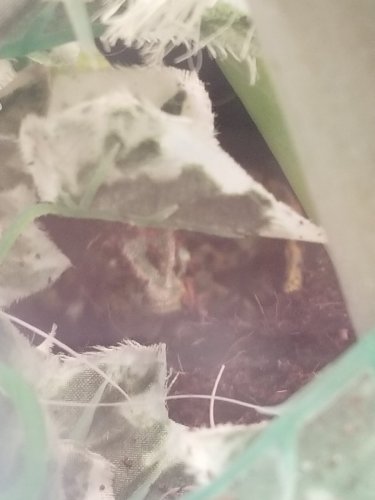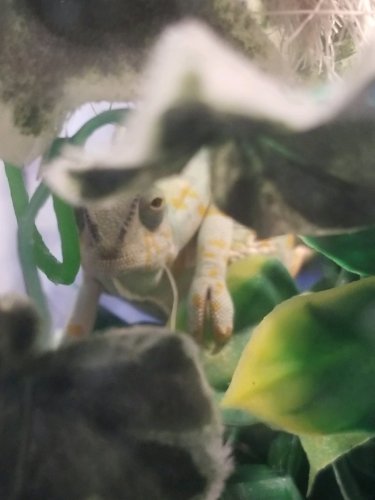Betta_Koi
New Member
Hi everybody,
I just recently rescued a Veiled Chameleon from my work. She was showing either old signs of MBD or very early signs of it. She wasn't going to get the help she needed where she was so she's mine now and has a vet appointment tomorrow.
Her name is Kodak and I have no idea how old she is I just know she is much larger then the Chameleons we normally get in (which usually seems to indicate the breeders knew there was something wrong with her. It's becoming a pattern with the older reptiles we get.) She'd also gravid and trying to dig her tunnel and lay as we speak.
I've had arboreal reptiles before but nothing like a female veiled chameleon. I'm flying mostly blind her. I've been dusting her feeders with calcium but I've been reading that the D3 in it can be dangerous if used everyday. I live in Utah where it is currently winter so I can't really give her natural sunlight without her freezing to death. I don't know if she's ever been outside or had natural UV. She has a UVB 5.0 light in her tank but I was wondering how bad it is to dust with D3 calcium daily since we can't really take her outside at the moment, and if it is dangerous, where I can get non-D3 calcium because my work doesn't seem to carry it.
She's currently not showing much interest in food but that seems to be because she'd preggers. She also has a heating pad and a regular light bulb that seems to be keeping her quite warm. She has three live plants in her tank as well. Again, I'm completely new to Veils and Chameleons (especially females) in general. Any advice would be greatly appreciated.
I just recently rescued a Veiled Chameleon from my work. She was showing either old signs of MBD or very early signs of it. She wasn't going to get the help she needed where she was so she's mine now and has a vet appointment tomorrow.
Her name is Kodak and I have no idea how old she is I just know she is much larger then the Chameleons we normally get in (which usually seems to indicate the breeders knew there was something wrong with her. It's becoming a pattern with the older reptiles we get.) She'd also gravid and trying to dig her tunnel and lay as we speak.
I've had arboreal reptiles before but nothing like a female veiled chameleon. I'm flying mostly blind her. I've been dusting her feeders with calcium but I've been reading that the D3 in it can be dangerous if used everyday. I live in Utah where it is currently winter so I can't really give her natural sunlight without her freezing to death. I don't know if she's ever been outside or had natural UV. She has a UVB 5.0 light in her tank but I was wondering how bad it is to dust with D3 calcium daily since we can't really take her outside at the moment, and if it is dangerous, where I can get non-D3 calcium because my work doesn't seem to carry it.
She's currently not showing much interest in food but that seems to be because she'd preggers. She also has a heating pad and a regular light bulb that seems to be keeping her quite warm. She has three live plants in her tank as well. Again, I'm completely new to Veils and Chameleons (especially females) in general. Any advice would be greatly appreciated.



